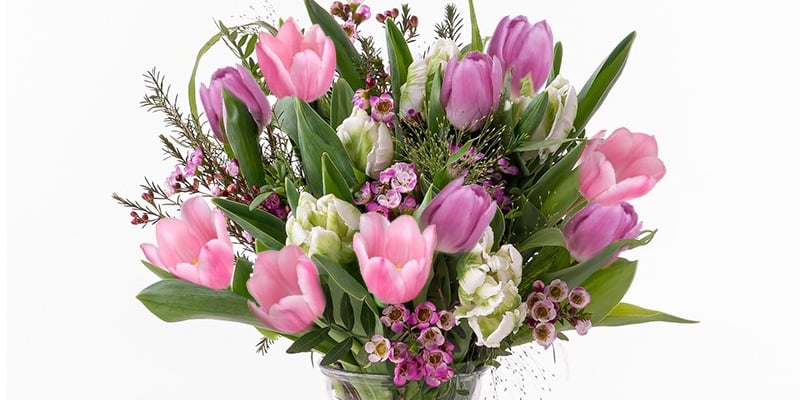
With their bright cheerful colours and beautiful blooms, tulips are an iconic symbol of spring.
If you love tulips, you'll be pleased to know there's much more to them than meets the eye. Keep reading for some of our favourite facts you didn't know about tulips.
Tulips are native to Central Asia
Tulips originally grew wild in the temperate mountains and grasslands of Central Asia and Southern Europe.
It's believed they were first cultivated in Constantinople in the 11th century. They eventually became the symbol of the Ottomans, with tulip motifs a popular element in literature, art, music, and more.
Although nobody knows for sure how they were eventually introduced to Europe, the most common theory is that that an ambassador to the Ottoman Empire in the 16th century sent back seeds and bulbs - and from there, their popularity exploded.
There are over 3000 types of tulips
Tulips are one of the most instantly recognisable flowers, but they're definitely not all the same! There are 75 different species and over 3000 varieties currently recognised. New varieties are regularly being cultivated as well, so this number will only go up.
Some, such as single tulips have the classic cup shaped flowers, whilst others are much less recognisable - double late tulips, for example, have big frilly double blooms resembling peonies. One striking feature that lots of tulips do have in common however is that most have completely symmetrical flowers.
As well as our classic single tulips, we have a new range of stunning double tulips available.
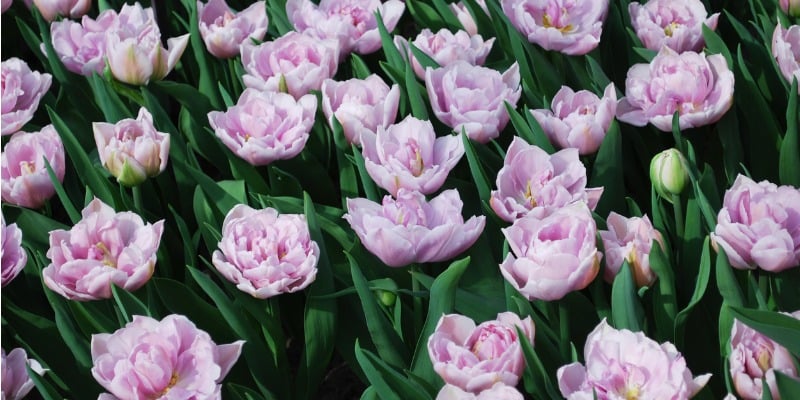
Tulip Mania
In the late 1630s during the Dutch Golden Age, tulips became more desirable than ever before. Seen as luxury items and status symbols, their popularity exploded - leading to the famous 'Tulip Mania', one of the first financial bubbles in history.
The price of tulip bulbs had been steadily increasing from the start of the 1600s, but as word spread of their value, more and more people wanted in. By late 1636, the price of tulip bulbs had skyrocketed, with some rare varieties costing as much as houses, and thousands of people became involved in the frantic tulip trade.
This wasn't to last however - by early 1637, the prices had risen so high that nobody could actually afford the tulips. Prices collapsed once more, and unfulfilled contracts led to years of dispute over debts owed.
Tulips can be any colour - except blue
Tulips are much loved for their vibrant colour, and there's definitely something to suit every taste. They can be grown in practically any colour, from snowy white to purples so dark they are almost black.
The only colour tulips aren't available in is blue. Blue is one of the rarest colours in flowers, and despite breeders' best efforts, 'blue' tulips are usually more purple or lilac.
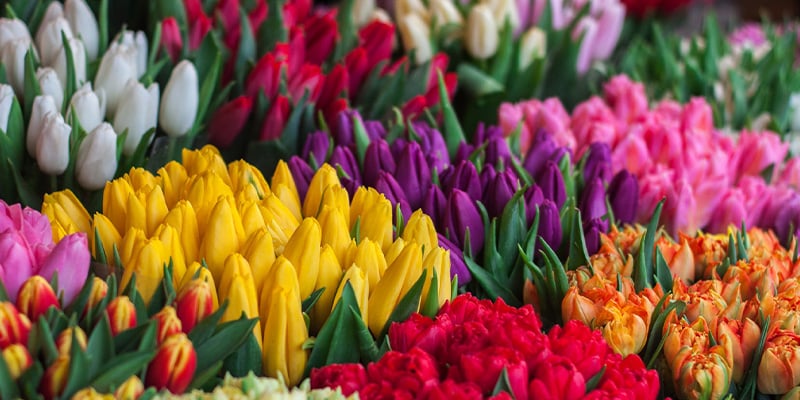
Tulips Meanings & Symbolism
Tulips have a variety of symbolic meanings, but they most commonly represent deep and undying love. As springtime flowers, they're also associated with rebirth and new beginnings.
Naturally, different colours also have different meanings:
Red Tulips
As with many red flowers, red tulips are the colour most associated with love, passion, and romance.
The old Persian story of the star-crossed lovers Fahad and Shirin tells of how when the two died, red tulips sprouted from their blood, so it's no surprise that red tulips are a symbol of eternal love.
Pink Tulips
Pink tulips are a great way to send a message of affection or congratulations, as they symbolise care, confidence, and best wishes.
Purple Tulips
Purple dyes used to be affordable to only the richest in society, so the colour itself became a symbol of royalty. Purple tulips have kept this meaning, signifying royalty, sophistication, and elegance. What better way to tell someone you admire them?
Yellow Tulips
These sunny blooms represent joy, happiness, and cheer. In the Victorian language of flowers, they sent the adorable message "There’s sunshine in your smile."
White Tulips
White tulips share their meaning with other white flowers, and are said to symbolise ideas like purity, forgiveness, and peace.
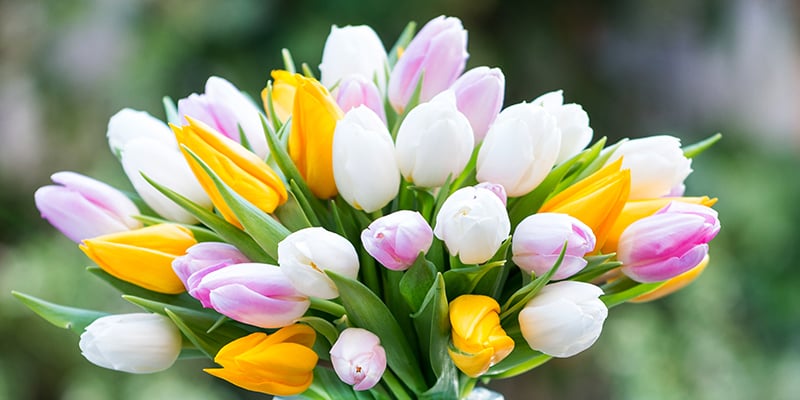
Tulips are edible
If you like to get creative in the kitchen, try adding tulips. The petals are edible, and have a sweet taste - making them the perfect garnish for cocktails, cakes, and more.
The bulbs are also technically edible, but we wouldn't recommend it. They don't taste particularly pleasant, and they have to be prepared carefully as several parts of the bulb are mildly poisonous. Some people are more sensitive than others, but eating the bulbs often leads to nausea, stomach issues, fever, and more.
However, desperate times do lead to desperate measures. When food supplies to the Netherlands were blocked during the Second World War, tulip bulbs helped to stave off widespread hunger and famine. The government published guidance on how to prepare the bulbs, with people using them as substitutes for vegetables, and even grinding them down to use as flour or coffee.
Tulips continue to grow when cut
If you've ever had a bouquet of tulips, you might have noticed that the stems get longer in water, even after they've been trimmed down. This is because tulips are very receptive to sunlight, so they'll keep growing towards it. Their blooms also close at night when the sun goes down!
If your tulips start to outgrow other stems in your bouquet, don't worry - you can just trim them down again to match the rest. As they grow, they can also bend a little and droop. We recommend using a narrower vase to keep them sturdy and upright. It can also be helpful to rotate the vase so the flowers don't bend too far in one direction.
Love tulips? Explore our gorgeous selection of tulips today to find your perfect springtime pick-me-up.
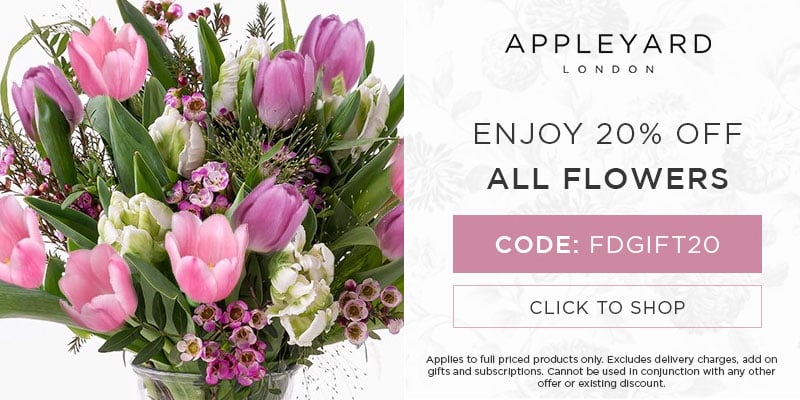

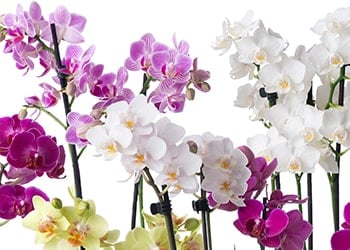





